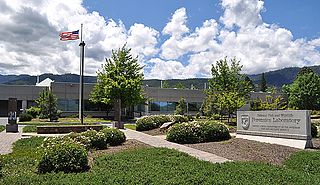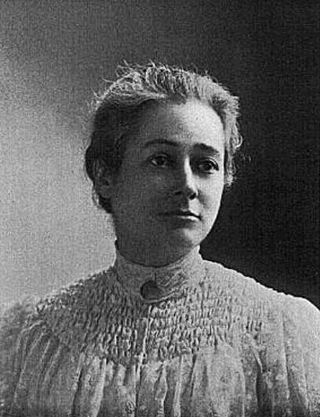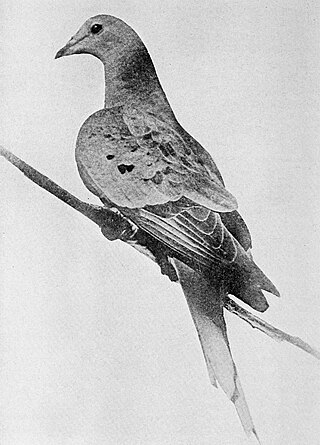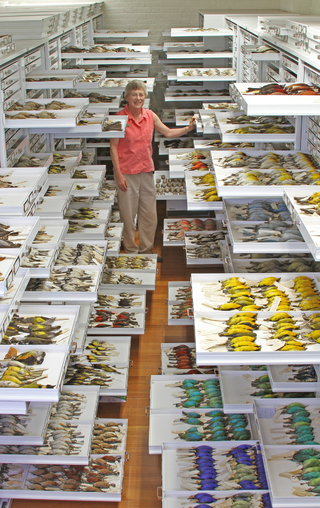Related Research Articles

Ornithology is a branch of zoology that concerns the study of birds. Several aspects of ornithology differ from related disciplines, due partly to the high visibility and the aesthetic appeal of birds. It has also been an area with a large contribution made by amateurs in terms of time, resources, and financial support. Studies on birds have helped develop key concepts in biology including evolution, behaviour and ecology such as the definition of species, the process of speciation, instinct, learning, ecological niches, guilds, island biogeography, phylogeography, and conservation.

Pamela Cecile Rasmussen is an American ornithologist and expert on Asian birds. She was formerly a research associate at the Smithsonian Institution in Washington, D.C., and is based at the Michigan State University. She is associated with other major centers of research in the United States and the United Kingdom.
Frances Hamerstrom was an American writer, naturalist and ornithologist known for her work with the greater prairie chicken in Wisconsin, and for her research on birds of prey. Hamerstrom was a prolific writer, publishing over 100 professional papers and 10 books on the prairie chicken, harriers, eagles, and other wildlife topics. Some were translated into German.
The Cornell Lab of Ornithology is a member-supported unit of Cornell University in Ithaca, New York, which studies birds and other wildlife. It is housed in the Imogene Powers Johnson Center for Birds and Biodiversity in Sapsucker Woods Sanctuary. Approximately 250 scientists, professors, staff, and students work in a variety of programs devoted to the Lab's mission: interpreting and conserving the Earth's biological diversity through research, education, and citizen science focused on birds. Work at the Lab is supported primarily by its 75,000 members.

The National Fish and Wildlife Forensics Laboratory is located in Ashland, Oregon, United States. Founded in 1988 and run by the United States Fish and Wildlife Service, the forensics laboratory is the only such laboratory in the world devoted to wildlife law enforcement. By treaty, the forensics laboratory is also the official crime lab for CITES and the Wildlife Group of Interpol. The laboratory maintains an online feather database, called the Feather Atlas, which is available on their website. Ken Goddard serves as the current Lab Director.

Florence Augusta Merriam Bailey was an American ornithologist, birdwatcher, and nature writer. Between 1890 and 1939, she published a series of field guides on North American bird life. These guides were often written with amateur birdwatchers in mind, leading to the popularity of the birding movement.

Ludlow Griscom was an American ornithologist known as a pioneer in field ornithology. His emphasis on the identification of free-flying birds by field marks became widely adopted by professionals and amateurs. Many called him "Dean of the Birdwatchers."

Martha was the last known living passenger pigeon ; she was named "Martha" in honor of the first First Lady Martha Washington.

Forensic biology is the application of biology into law enforcement investigations.

The white-winged dove is a dove whose native range extends from the Southwestern United States through Mexico, Central America, and the Caribbean. They are large for doves, and can be distinguished from similar doves by the distinctive white edge on their wings. They have a blue eyering, and red eyes. The plumage is brownish-gray to gray. Juveniles are duller in color, and have brown eyes. The call is likened to English phrase "who cooks for you". There are three subspecies. It was first described by George Edwards in 1743, and given its binomial name by Linnaeus in 1756. It was moved into the genus Zenaida in 1838.

Bird collections are curated repositories of scientific specimens consisting of birds and their parts. They are a research resource for ornithology, the science of birds, and for other scientific disciplines in which information about birds is useful. These collections are archives of avian diversity and serve the diverse needs of scientific researchers, artists, and educators. Collections may include a variety of preparation types emphasizing preservation of feathers, skeletons, soft tissues, or (increasingly) some combination thereof. Modern collections range in size from small teaching collections, such as one might find at a nature reserve visitor center or small college, to large research collections of the world's major natural history museums, the largest of which contain hundreds of thousands of specimens. Bird collections function much like libraries, with specimens arranged in drawers and cabinets in taxonomic order, curated by scientists who oversee the maintenance, use, and growth of collections and make them available for study through visits or loans.
Bradley Curtis Livezey was an American ornithologist with scores of publications. His main research included the evolution of flightless birds, the systematics of birds, and the ecology and behaviour of steamer ducks.
Dioscoro Siarot Rabor, also known as Joe Rabor, was a Filipino ornithologist, zoologist, and conservationist. Known as the "Father of Philippine Wildlife Conservation", he led more than 50 wildlife expeditions in the Philippines, authored 87 scientific papers and articles, and described 69 new bird taxa and numerous mammal species.

Douglas W. Owsley is an American anthropologist who is head of Physical Anthropology at the Smithsonian's National Museum of Natural History (NMNH). He is regarded as one of the most prominent and influential archaeologists and forensic anthropologists in the world in some popular media. In September 2001, he provided scientific analysis at the military mortuary located at Dover Air Force Base, following the 9/11 attack in Washington, D.C. The following year, the US Department of Defense honored him with the Commander's Award for Civilian Service for helping in the identification of 60 federal and civilian victims who died when American Airlines Flight 77 hit the Pentagon.

Chandler Seymour Robbins was an American ornithologist. His contributions to the field include co-authorship of an influential field guide to birds, as well as organizing the North American Breeding Bird Survey.

Richard Charles Banks was an American author, ornithologist and Emeritus Research Zoologist on staff with the Patuxent Wildlife Research Center run by the U.S. Geological Survey and stationed at the Smithsonian Institution in Washington, D.C. He is the founder of the Ornithological Council and known for his study of the migratory systems, patterns, and geographic variations of North American birds, primarily focusing on the research and analysis of Greater White-fronted Geese.

Roxie Collie Simpson Laybourne was an American ornithologist born in Fayetteville, North Carolina. She pioneered the study of forensic ornithology while at the National Museum of Natural History; these forensic techniques for identifying species of birds involved in bird strikes led to aircraft safety improvements.
Mercedes S. Foster is an American zoologist who researched the evolution of lek behavior in birds, bird-plant interactions, and male-male cooperation in reproduction. She is very active in conservation efforts, including training workshops, being a Scientific Advisor for the National Bio-inventory Program of Paraguay, as a Founding Director of the American Bird Conservancy, and as a Founder and Co-coordinator of the Latin American Library Enhancement Program. She is also the Director and Editor of a program to publish handbooks giving "standard methods for measuring and monitoring the biodiversity of different groups of organisms".

Erin H. Kimmerle is an American forensic anthropologist, artist, and executive director of the Institute of Forensic Anthropology & Applied Science at the University of South Florida. She was awarded the 2020 AAAS Award for Scientific Freedom and Responsibility.
References
- 1 2 3 4 5 6 7 8 9 10 11 "Carla J. Dove". Washington Biologists' Field Club. USGS Patuxent Wildlife Research Center. Retrieved March 26, 2018.
- ↑ "Birds Staff Department of Vertebrate Zoology". Smithsonian National Museum of Natural History. Retrieved March 26, 2018.
- 1 2 3 4 5 6 7 8 "Carla J. Dove - Bird-Aircraft Strike Hazards". Nuttall Ornithological Club. October 5, 2009. Retrieved April 25, 2018.
- 1 2 3 "Smithsonian Institution, Feather Identification Lab". Federal Aviation Administration. Retrieved April 24, 2018.
- ↑ Chatterjee, Rhitu (June 20, 2013). "Animal CSI: Inside the Smithsonian's Feather Forensics Lab". Torch. Retrieved April 25, 2018.
- ↑ "Medallion of Recognition". Lord Fairfax Community College. Retrieved March 26, 2018.